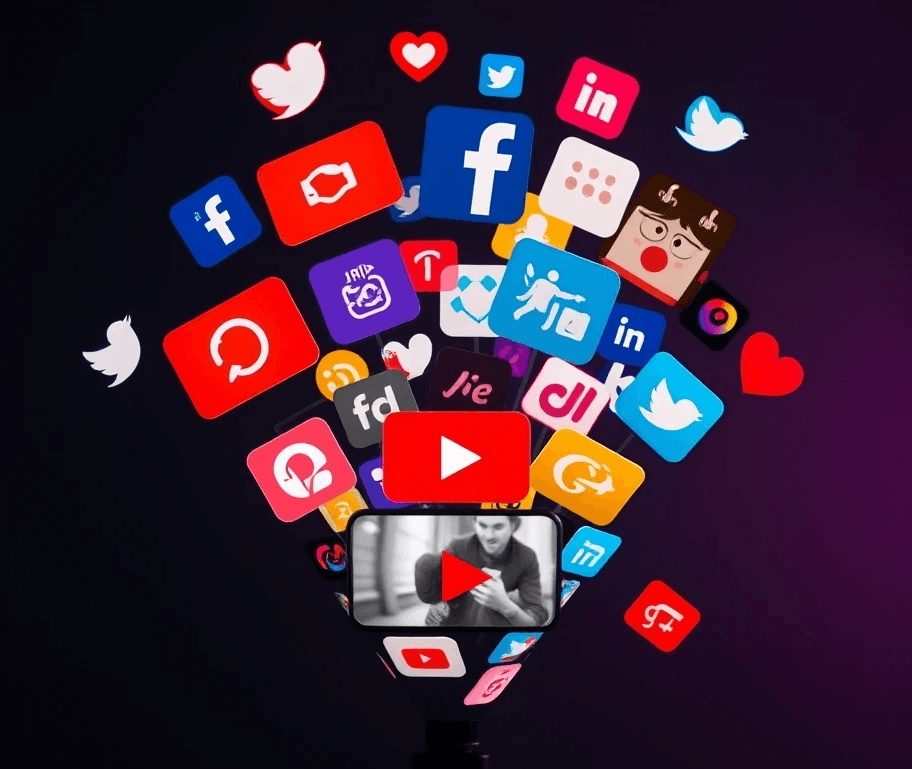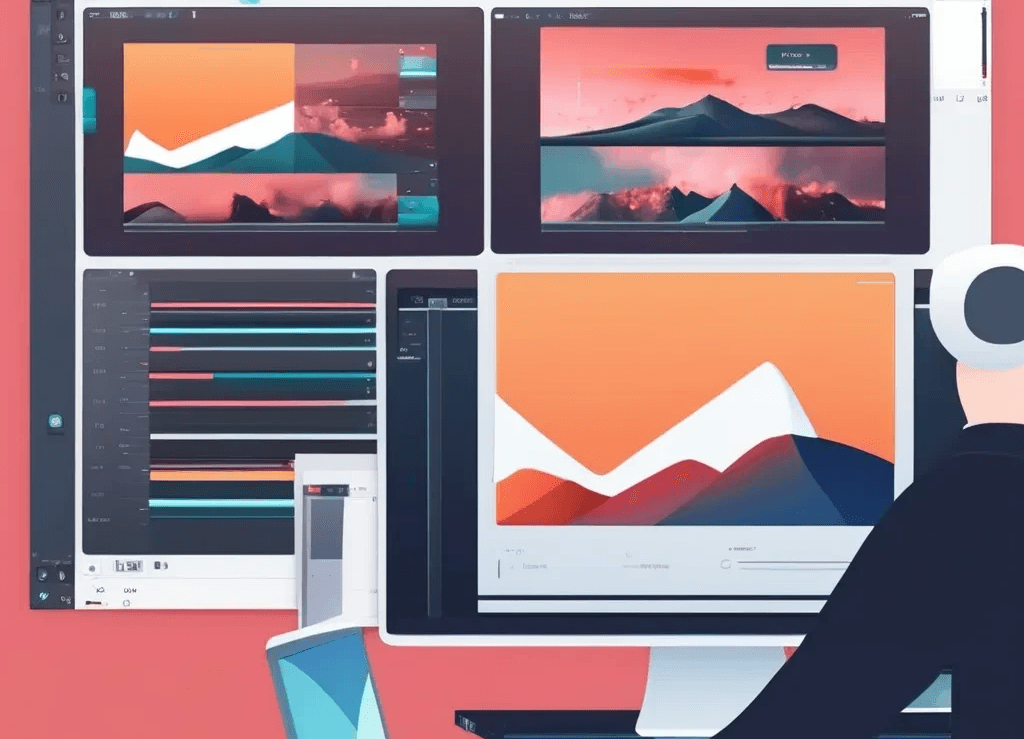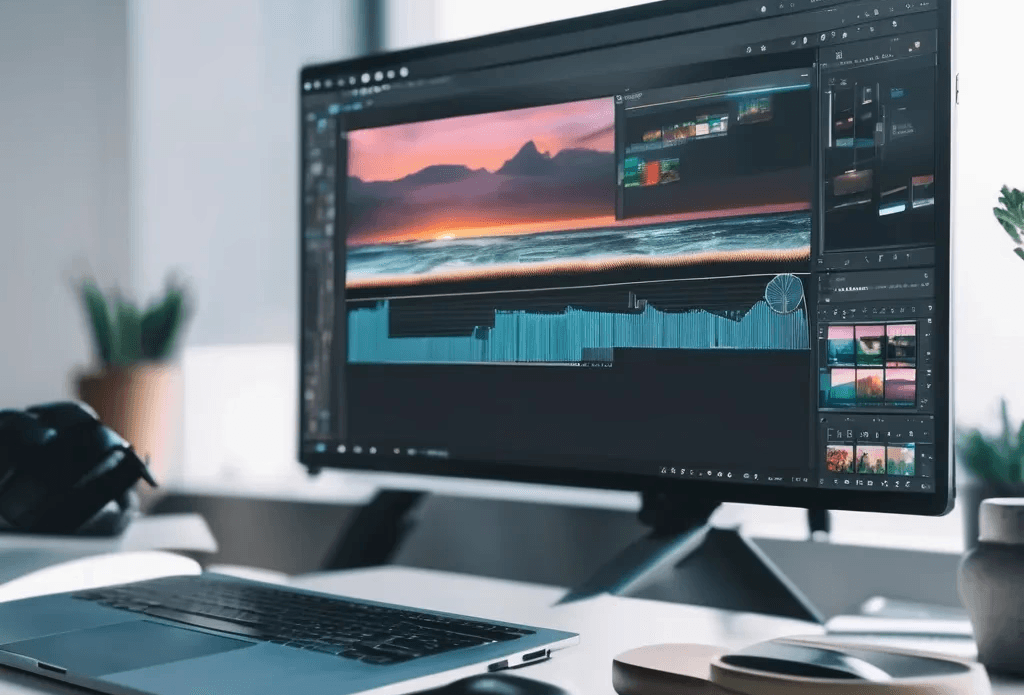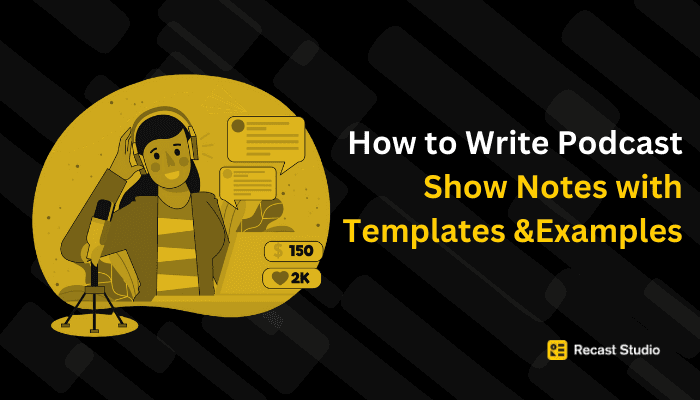Repurposing
How to Repurpose Video Content: Simple Steps and Strategies
Learn how to repurpose video content: increase reach and enhance SEO. Includes setting goals, choosing videos, and multi-platform distribution.
11 ott 2024
Creating content can feel like casting a powerful spell. It takes creativity, time, and effort to make something truly impactful. But just like the Harry Potter series didn’t stop at being just a set of books, your video content doesn’t need to stop at a single format, either.
Repurposing content is a way to breathe new life into what you’ve already created, allowing it to reach new audiences, serve different purposes, and maximize its potential.
Think of Harry Potter: it started as a beloved book series, but it quickly transformed into blockbuster films, audiobooks, theme park attractions, and even a Broadway play. Each new version reached a different audience, and the story continued to live on in fresh ways.
This is precisely what repurposing does for your video content. It transforms a single piece into multiple formats, each tailored to resonate with different platforms and viewers.
Using the right strategies and tools makes repurposing video content simple and efficient. It gives your videos a second (or third, or fourth) life, which makes your content work harder for you.
Let’s explore how to turn your existing video library into a goldmine of new content.
What is Repurposing Video Content?

At its core, repurposing video content is about transforming one piece of content into several new ones. It’s a powerful way to extend the life of your original video, ensuring it reaches wider audiences and serves multiple purposes.
For example, Harry Potter has evolved from books into films, theme parks, and plays. Similarly, your video content can evolve into blog posts, podcasts, social media snippets, and more.
Why Repurpose Video Content?
Reach a Wider Audience: Different platforms attract different types of users. A YouTube video might be perfect for long-form content lovers, but a shorter version on Instagram could reach a whole new group of potential viewers.
Boost Your SEO: Repurposing video content into written content, such as blog posts or articles, can help your website’s SEO. Google loves fresh content, and by repurposing, you're constantly feeding search engines new, valuable material linked to your source.
Save Time and Resources: Creating original content from scratch every time is time-consuming. Repurposing allows you to generate more content in less time by working more innovatively with what you already have.
Build Brand Consistency: By repurposing video content, you ensure your brand message stays consistent across various platforms. Whether someone finds you on Instagram or reads your blog, they’ll get the same high-quality message that reinforces your brand.
Examples of Repurposing Video Content:
You can turn Webinars into blog posts, highlight reels, or even social media Q&A sessions.
Interviews can become short clips for Instagram Stories and long-form articles for your website.
You can transform Explainer Videos into infographics or email campaigns.
Repurposing is all about reimagining your content to make the most of it creatively and effectively.
How to Repurpose Video Content in Simple Steps
Now that you understand the "what" and "why" behind repurposing video content, let’s dive into the “how.” Whether you want to reach new audiences, boost your SEO, or simply get more mileage from your existing content, the process is straightforward when you follow these steps.
1. Set Your Goals
Before repurposing any content, clearly define your objectives. Are you looking to increase social media engagement, improve your website’s SEO, or build brand awareness across multiple platforms? Setting clear goals helps you choose the right formats and platforms to maximize impact.
2. Pick Your Source Video
Not every video is ideal for repurposing, so choose wisely. Look for high-performing content that resonates with your audience. Videos with strong engagement metrics like views, comments, and shares are great candidates. A well-loved webinar or product demo is more likely to yield quality repurposed content than a lesser-performing video.
3. Choose Your Platform
Repurposing video content isn’t a one-size-fits-all strategy. Different platforms call for different formats. For instance:
Instagram and TikTok: Short, punchy clips with high visual appeal.
Blogs and Articles: Well-written transcriptions, summaries, or detailed video breakdowns.
By aligning your content with the platform’s strengths, you ensure that it resonates with the intended audience.
4. Repurpose the Video
Now, it’s time to get creative. Here are some ideas for repurposing your video:
Turn long videos into short clips: Break down key moments into bite-sized videos for social media.
Convert to blog posts: Transcribe your video and transform it into a well-structured blog post, adding context, examples, and SEO optimization.
Create podcasts: Extract the audio from your video and upload it as a podcast episode.
Design infographics: Pull out data or key insights from your video and turn them into visually engaging infographics for sharing.
Recast Studio makes this process seamless, allowing you to quickly create new formats without losing quality.

5. Edit and Finalize Your Content
You need to ensure that the content you repurpose is of high quality. Each platform has its nuances, so make sure the format, tone, and length are appropriate for the medium. Use a checklist to verify that all content is polished and aligned with your original goals.
6. Publish Your Repurposed Video Content
It's time to publish once you have edited everything and it is ready to go. Use scheduling tools to ensure your repurposed content is consistently distributed across multiple platforms at the best times for audience engagement.
Creative Examples of Repurposing Video Content
Repurposing video content isn’t just about chopping up long videos into smaller ones; it’s about reimagining your content in engaging and valuable ways for different audiences. Let’s look at some creative ways to repurpose your video content, helping you get the most out of your efforts.
Identify High-Performing Videos
Start with your best content. Look for videos that garnered the most views, engagement, and shares. These videos are more likely to succeed when repurposed, as they’ve already shown a strong connection with your audience. Tools like Recast Studio allow you to quickly identify and break down critical segments for repurposing.
Segment Video Content Into Shorter Clips
Got a 30-minute webinar or product demo? Break it down into bite-sized clips for Instagram, TikTok, or Twitter. Focus on critical takeaways or the most engaging moments. Short-form video content is highly shareable and works well on platforms with younger, time-constrained audiences.
Example: Repurpose a 30-minute interview with an industry expert into several 1-minute clips highlighting key insights. Post each clip on different platforms to direct traffic to the full-length video or blog post.
Convert Video Content Into Blog Posts
Turn your video into a written blog post by transcribing the content, adding context, and structuring it for readability. This helps boost your website’s SEO while repurposing content for audiences who prefer reading over watching. Be sure to link back to the original video to encourage cross-platform engagement.
Example: Convert a detailed product tutorial video into a step-by-step written guide with images and embedded video snippets for a more interactive reading experience.
Host a Live Q&A Session
After publishing a well-received video, host a live Q&A session on platforms like Instagram, YouTube, or Facebook. This allows your audience to engage directly with the content, ask questions, and gain further insights. It also allows you to create more content based on the interactions during the session.
Example: Following a popular tutorial video, a live Q&A lets your audience explore specific steps more deeply, creating a sense of community and ongoing engagement.
Create Video Teasers for Upcoming Content
Repurpose sections of your video into short teasers to generate interest in upcoming content or events. Use these teasers to build anticipation and drive traffic to the original or future content.
Example: Take snippets from a webinar and create a teaser for the next session, highlighting the most compelling insights. Share it across social media to build excitement for the entire event.
Repurpose for Educational Material
If your videos are informative or instructional, consider turning them into educational materials for Learning Management Systems (LMS) or online courses. Breaking videos into learning modules with quizzes and additional resources makes them perfect for structured learning environments.
Example: A series of how-to videos can become a full-fledged course, offering bite-sized lessons, quizzes, and downloadable resources to enhance learning.
Design Carousel Graphics for Key Insights
Instead of focusing on video formats, extract the main takeaways and turn them into a visually appealing carousel for platforms like Instagram or LinkedIn. Carousels are highly engaging and allow for easy digestion of information.
Example: If your video contains data-driven insights, break down the most significant points into a carousel, making it easier for users to swipe through and absorb the key messages.
By applying these creative repurposing techniques, you extend the life of your video content while delivering value to different audience segments.
Using Technology for Efficient Repurposing
Repurposing video content manually can be time-consuming, but modern technology has made it far more accessible. From breaking down long videos into social media snippets to converting content into written formats, the right tools can streamline the entire process.

Let’s explore how AI can help you maximize your content.
Utilizing AI Tools
Artificial intelligence is revolutionizing how we handle video content. AI-powered tools can automatically identify critical moments, transcribe audio, and suggest optimal repurposing formats. Instead of manually scrubbing through hours of footage, AI tools can quickly generate clips, captions, and transcripts with just a few clicks.
Example: AI tools can help pull highlights from a 60-minute webinar, instantly creating 15-second clips for Instagram or LinkedIn.
Recast Studio fully utilizes AI to help you cut down on editing time. It automates video segmentation, making it easy to extract the best parts of your content for different platforms.
Recast Studio: The Ultimate Video Repurposing Tool
Regarding repurposing, Recast Studio stands out as the ultimate solution. This platform is designed to keep marketing teams with no video editing skills in mind, offering features that make transforming your video content into multiple formats easier. Here’s why Recast Studio should be your go-to tool for repurposing:
Ease of Use: Recast Studio’s intuitive interface ensures that even non-video editors can easily create content. Its drag-and-drop functionality simplifies segmenting and editing videos for different platforms.
Automated Content Segmentation: With Recast Studio, you can quickly chop up long videos into bite-sized clips perfect for Instagram, TikTok, or YouTube Shorts. The platform helps identify critical moments, saving time and ensuring that your best content shines.
Multi-Platform Adaptation: Once you’ve segmented your video, Recast Studio allows you to adjust the format and size for any platform—whether vertical for TikTok or square for Instagram. You no longer need to worry about manually resizing or reformatting your videos.
Simplified Audio Extraction: Do you need a podcast or audiogram from your video? Recast Studio makes extracting high-quality audio easy and repurposing it for podcasts or voiceover content. You can even generate transcripts for blog posts or captions, all in one place.
Recast Studio doesn’t just repurpose your content; it enhances it. From long-form videos to engaging social media clips, the platform ensures your content gets maximum impact across all platforms.
Automating Distribution
The next step is distribution once you repurpose your video into different formats. Instead of manually posting on multiple platforms, Recast Studio integrates with social media scheduling tools, allowing you to automate the entire process. This ensures that your repurposed content gets posted consistently at the optimal times for audience engagement.
Using AI and intuitive editing features, you can transform one video into multiple assets that can be shared across platforms.
20+ High-Impact Ways to Repurpose Video Content
Repurposing video content is a way to amplify the reach of your original work, engage different audiences, and extend your content’s lifecycle. Done right, repurposing can help you hit multiple business goals—improving SEO, boosting social engagement, and driving conversions—all from a single piece of content.
Below, we’ll explore 20+ strategic ways to repurpose video content to help you get the most out of every video you create. These ideas go beyond the basics, offering practical, creative, and high-impact approaches to keep your content relevant and effective across various platforms.
Turn Long Videos into Micro-Content
Attention spans are shorter than ever, and micro-content is thriving on platforms like TikTok and Instagram. Take long-form videos, like webinars or interviews, and break them down into 15 to 60-second snippets. Focus on critical insights or engaging moments to create bite-sized content that grabs attention quickly.
Tip: Choose key moments summarizing a big idea or presenting a thought-provoking insight. Shorter clips with a precise message work best for platforms like TikTok or Instagram.
Extract Audio for Podcasts
Don’t stop at video—extract the audio and transform it into a podcast. Many people prefer to consume content on the go, and repurposing your video into an audio format opens up a whole new audience.
Tip: Make sure the audio stands alone without too many visual references. Intro and outro music can also enhance the listening experience.
Create Teaser Trailers
Turn segments of your video into teaser trailers to build anticipation for upcoming content. A 30-second clip that teases critical moments from a forthcoming webinar or interview can drive traffic to your full content.
Tip: In your teaser, highlight a problem and hint at the solution to encourage curiosity and clicks.
Transform Video into Blog Posts
Transcribing your video and converting it into a well-structured blog post is an effective way to boost SEO. Adding written content alongside your video increases discoverability and caters to audiences who prefer reading.
Tip: Use a tool to transcribe your video, then break the content into short sections with subheadings and include relevant keywords to improve SEO.
Design Infographics from Key Insights
Videos contain data, insights, and quotes that you can use to repurpose the content into visually appealing infographics. These work great on LinkedIn, Pinterest, and Instagram, making complex information easily digestible.
Tip: Focus on your video's key data points or takeaways to create a visually engaging, shareable infographic. Simplicity and clarity are essential for effective infographics.
Convert into a Webinar or Course
If your video provides educational value, consider turning it into a webinar or an online course. You can break the video into modules, add quizzes or assignments, and deliver it as a learning experience.
Tip: Segment your video into lessons or modules focusing on distinct topics. This helps users engage with the material in manageable chunks.
Create Audiograms
Audiograms—short audio clips with waveforms and captions—are perfect for promoting podcasts or voice-driven content on social media. They help make your audio content visually engaging and more shareable.
Tip: Pair a short, impactful quote from your audio content with the visual waveform, making it engaging and easy to share.
Turn Video Quotes into Visual Social Posts
Pull memorable quotes or soundbites from your video and turn them into impactful social media posts. Pair the quote with engaging visuals to create shareable content that sparks conversation.
Tip: Choose quotes that offer value to your audience, whether they’re about inspiration, education, or humor. Pair them with relevant and appealing images or graphics.
Create Training Materials for Internal Use
Use your video content for employee onboarding or internal training sessions. Cut out key instructional sections and combine them with quizzes or resource guides for an engaging learning experience.
Tip: Break the content into clear, concise, easily digested lessons. Add quizzes or summaries to reinforce learning.
Turn Video into Email Content
Embed video snippets or GIFs in your email newsletters. Videos make your emails more engaging and can drive higher click-through rates, mainly if your content is educational or entertaining.
Tip: Keep video snippets short and relevant to the email content. Adding a “Watch More” link to the full video can drive additional traffic.
Create Long-Form Written Content (eBooks, Whitepapers)
If your video explores a specific topic in-depth, break it down into a long-form resource like an eBook or whitepaper. You can repurpose video scripts, transcripts, and key points into a downloadable asset.
Tip: Expand the information in your video with additional insights or research, making the resource more valuable and comprehensive.
Host a Q&A or Live Event Around the Video
After a video gains traction, host a live Q&A session or event to engage with your audience in real-time. This keeps the conversation going and allows you to interact directly with viewers, answering their questions and providing additional insights.
Tip: Use the most engaging parts of the original video as conversation starters during the live session. Expand on points or discuss new developments to offer extra value.
Turn Video into Interactive Quizzes
If your video is instructional, consider turning it into interactive quizzes for platforms like Typeform or Kahoot. This works well in educational or training contexts, engaging users while testing their knowledge.
Tip: Create questions that reinforce key points from your video. Adding explanations for the answers helps learners understand the material better.
Create Carousel Posts from Video Insights
Carousel posts—particularly on Instagram and LinkedIn—are highly engaging. Break down key points or statistics from your video and repurpose them into a carousel of insights, making it easier for users to swipe through valuable takeaways.
Tip: Design each slide to stand alone yet build a cohesive narrative across the carousel. Focus on visual consistency and clarity.
Develop Customer Testimonials from Video Interviews
If your video features customer feedback or success stories, turn it into a testimonial. This type of social proof builds trust and you can use it across your website, social media, and marketing collateral.
Tip: Use snippets highlighting the customer’s key pain points and how your product or service helped them succeed. Keep it authentic and relatable.
Generate GIFs from Key Moments
GIFs are fun, engaging, and highly shareable, especially on social platforms like Twitter and Facebook and even in email marketing. Take memorable or funny moments from your video and turn them into looping GIFs that capture attention.
Tip: Pick moments with a clear action or expression that translate well into a loop, and keep them short—ideally under 5 seconds.
Use Video Clips in Paid Ads
Short, attention-grabbing video clips are perfect for paid advertising campaigns on Facebook, Instagram, or YouTube. By repurposing sections of your video that showcase your product or critical benefits, you can create highly engaging ads.
Tip: Focus on clips highlighting a clear value proposition or pain point solution to catch users' attention in the first few seconds.
Repurpose for Webinars or Virtual Events
Use parts of your original video for a more significant virtual event or webinar. Integrating pre-recorded segments can elevate live presentations while saving time on content creation, whether it's a how-to, demo, or educational content.
Tip: Use clips from your video to emphasize key points during live webinars. This allows for a mix of live interaction and polished, pre-prepared content.
Create How-To Guides
Turn your instructional videos into step-by-step how-to guides. Use screenshots from the footage alongside descriptive text to create a written resource for those who prefer reading over watching.
Tip: Break down the steps clearly and concisely, and include images or embedded video snippets for additional context.
Repurpose for Employee Training
Use instructional or educational videos as part of employee training programs. Breaking them into focused training modules allows you to offer ongoing development materials for internal teams or customer onboarding.
Tip: Add quizzes or follow-up tasks after each segment to reinforce learning and ensure comprehension.
Build Case Studies
If your video includes customer stories or data that highlight the success of your product or service, turn it into a detailed case study. Case studies are valuable assets for B2B marketing and can showcase real-world results.
Tip: Focus on clear, measurable outcomes from the video that you can expand upon in the case study to add credibility and depth.
Create YouTube Shorts or TikTok Videos
For platforms that favor short-form video content, repurpose your longer videos into quick 15- 60-second clips for TikTok or YouTube Shorts. These clips should focus on concise, engaging moments that can drive traffic back to the full video.
Tip: Focus on moments that provide value or entertain—short-form video success is often about grabbing attention in the first few seconds.
By thinking outside the box, you can transform a single video into 20+ different formats that each serve a unique purpose. From improving your SEO with blog posts to creating engaging social media content, repurposing video is a cost-effective strategy that maximizes your content’s potential.
Top Tips for Effective Video Repurposing
Now that you’ve seen the various ways to repurpose your video content, let’s focus on some best practices to ensure you get the most out of your repurposing efforts. Repurposing isn’t just about reusing content—it’s about making your content work smarter, not harder. Here are some tips to help you make the most of your repurposed video content.
Don’t Try to Repurpose for Every Channel
Only some platforms will suit your repurposed content. Focus on the channels that matter most to your audience and where you’ll see the most significant returns. For example, a technical tutorial may perform better as a LinkedIn post than on TikTok, while a fun behind-the-scenes video may be perfect for Instagram.
Be selective about where you repurpose content. Align the platform with your audience demographics and the type of content you're sharing.
Create a Routine for Repurposing
Establish a consistent process for repurposing content so that it becomes part of your workflow. When you create new videos, always think ahead about how they can be broken down and used across multiple platforms.
Plan your repurposing strategy during the video creation phase. This helps you shoot with the idea of creating multiple pieces of content, saving you time later.
Batch Create Your Content
Instead of creating each piece of repurposed content one at a time, batch your creation process. For instance, edit all the short clips from a long video at once or transcribe several videos in one go to turn them into blog posts.
Batching similar tasks can save time and improve efficiency. It can also help maintain consistency across all repurposed content.
Tailor Content to the Platform
Each platform has its style, tone, and user behavior. What works on YouTube might not work on Instagram. When repurposing content, adjust the length, tone, and format to match the expectations of the platform’s audience.
Research the platform's best practices. For example, Instagram thrives on visually engaging, quick-hitting content, while LinkedIn supports longer, more professional posts.
Maintain Consistency Across Platforms
While you should tailor your content to each platform, it’s crucial that your messaging and branding remain consistent. This ensures your audience gets a unified experience no matter where they encounter your content.
Use consistent colors, fonts, and messaging to keep your brand recognizable across different platforms, even when the content format changes.
Track Performance and Adjust
Once you’ve repurposed content across different platforms, track its performance. Understanding which formats and platforms yield the best results will help you refine your strategy and focus on what works best.
Use analytics tools to monitor engagement rates, click-throughs, and other relevant metrics to evaluate the effectiveness of your repurposed content.
Repurpose Evergreen Content
Focus on repurposing evergreen content—content that remains relevant over time. Tutorials, how-to guides, and industry insights have a longer shelf life and can be reused multiple times with minimal updates.
Identify which of your videos are evergreen and prioritize them for repurposing. These pieces will deliver long-term value and you can refresh it as needed.
Optimize for SEO
When repurposing videos into written formats like blog posts or articles, ensure you oplimize it for SEO. This will help drive more organic traffic to your content and improve visibility.
Include relevant keywords, meta descriptions, and internal links to enhance the SEO performance of your repurposed content.
Ensure High-Quality Editing
Even when repurposing, you should always maintain quality. Ensure that each piece of content, whether a short video clip, a blog post, or an infographic, is edited to a high standard. Use tools that streamline editing but maintain quality. Keep branding consistent, and ensure that visuals and messaging are polished and professional.
Keep Audience Engagement in Mind
When repurposing content, always focus on how it can provide value to your audience. Each piece of repurposed content should serve a purpose: to educate, entertain, or inform. Keep the audience’s needs at the center of your repurposing strategy. Ask yourself what the audience gains from each piece of repurposed content. The more value you provide, the more engaged your audience will be.
By following these tips, you can repurpose your video content more strategically and effectively, ensuring it resonates with your audience across multiple platforms while maintaining consistency and quality.
Conclusion:
Repurposing video content is more than just a way to extend its lifespan—it’s a powerful strategy to amplify your message, engage diverse audiences, and maximize the return on your content investment. The opportunities are endless, from micro-content for social media to in-depth blog posts, audiograms, and interactive quizzes. By leveraging repurposing, you can:
Expand your reach across multiple platforms.
Boost your SEO with written formats that drive organic traffic.
Save time by reworking content that’s already proven to engage.
Keep your brand consistent and deliver value across every channel.
Recast Studio is your go-to solution to make this process seamless. With its intuitive platform, you can quickly and easily repurpose your videos into multiple formats—creating short social media clips, extracting audio for podcasts, or resizing content for different platforms. Recast Studio takes the hassle out of video repurposing, allowing you to focus on creating high-quality content while the platform handles the heavy lifting. Its AI-powered tools help you save time without compromising on quality, ensuring your content reaches the right audience at the right time.
Ready to get the most out of your video content? Start using Recast Studio today and unlock the full potential of your videos.
Latest articles
Ai Powered
Marketing Assistant for Your Podcast
A generative AI tool that automatically turns your podcast episode into short video clips & writes show notes, blog posts, social media posts and more in minutes.

